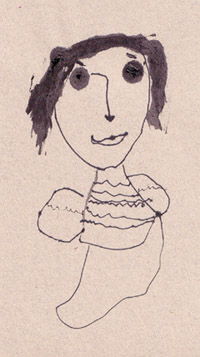LAYLA
ABDELRAHIM'S
HOME PAGE
2004-2005
Order and the literary rendering of chaos: children's
literature as knowledge, culture and social foundation
1st chapter to be
presented at the conference” Off to See the Wizard: Quests for Memory
and Culture in Children's Literature” on Saturday, 19th March, 2005.
2nd chapter to be presented at Childhoods 2005 – a global
conference addressing modern childhood and youth. organized by a group
of Norwegian researchers of the University of Oslo (UiO), the Norwegian
Social Research (NOVA) and the Childwatch International Research
Network (CWI) in Oslo in June-July 2005.
Society needs the spectacle of punishment not so much as to render
justice as to reconfirm the world and the self, says Steven Box in
Deviance, Society & Reality (1971).
Children’s literature - like its adult counterpart, I argue, is an
ambiguous and amorphous body that reflects and transmits reality and
culture, while simultaneously challenging them both.
The works I chose for this study depict imaginary creatures inhabiting
imaginary worlds, yet their realities are so organized that in each we
recognize ourselves. Nikolai Nosov wrote about mites in Flower Town,
who after industrialization and a technological/scientific revolution
travel around the globe and finally venture to the moon. Tove Jansson
brought to life the imaginary Moomintrolls and their harmonious world,
while Alan Alexandre Milne depicted a boy’s friendship with Winnie the
Pooh and this boy’s reign in the imaginary kingdom of toys
come-to-life. However, I argue that the premises on which these worlds
are organized are dialogically consistent with the real-life-referent:
our world.
My analysis rests on the contention that when we write or read about
imaginary worlds, we extract patterns from events and occurrences so as
to arrive at order and to make sense just as we do in real worlds.
Thus, regardless of the author's intent, books offer a specific set of
rules that can "convince" the reader and can make credible even an
imaginary world. Credibility, rules, representation - even in the case
of the fantastic - depend on the "knowledge" about the "real" world
that the author holds, questions, or argues for and each of the above
authors had a different view of human nature and of social relations.
How characters deal with deviance is the result of their nature: they
might be selective in their reaction to it, as does Piglet when
scorning Eyore's deviance (melancholy and social awkwardness) yet
ignoring Winnie the Pooh's earnest and honest avarice; they might
punish it in the manner of the characters from Narnia, they might work
together to awaken the "conscience" of Dunno in Nosov’s trilogy, or
they might not notice it at all as do the blithe dwellers of Jansson’s
Moomin Valley.
Here I link knowledge and deviance to order and chaos and propose to
examine the question of their literary rendition. The question of
knowledge shall thus remain central to my work.
Consequently, in this research I set out to demonstrate that the three
icons of children’s literature in Russia, Scandinavia and the world,
raise fundamental questions about the problems of definitions of
justice and propose alternative ways for understanding and representing
chaos and order. I compare and contrast the legal and philosophical
definitions of crime, deviance, punishment and justice, first. Then, I
proceed to compare and contrast these notions with the way in which
they are adapted, modified or challenged in the three children’s books.
These questions, I argue, transcend national and cultural borders and
can shift vital considerations in reading what we consider to be
children’s literature.
coming soon
